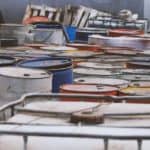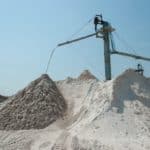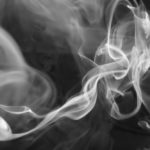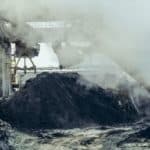Useful Industrial Hygiene Resources
INSIGHT TO USEFUL INDUSTRIAL HYGIENE RESOURCES
OSHA has established many regulations regarding the chemicals that are commonly used within the industry. Unfortunately, finding these references and standards can often be challenging. Due to this, we have summarized many of the standard documents and sources for exposure limits in one convenient place.
Insight IH Consulting is very capable of providing assessments for all the chemicals shown below. If you need assistance, do not hesitate, contact us today!
OSHA Permissible Exposure Limits
The following three tables establish the permissible exposure limits (PELs) for many industrial chemicals.
Table Z-1 Limits for Air Contaminants
Table Z-2 Toxic and Hazardous Substances
Table Z-3 Mineral Dusts
OSHA Standards
OSHA has developed chemical-specific standards that set numerous requirements to ensure the protection of employees. These standards often require a baseline determination and (depending on the concentrations) periodic monitoring (quarterly or semi-annually). These standards regulate the following chemicals:
1910.1001 – Asbestos.
1910.1002 – Coal tar pitch volatiles; interpretation of term.
1910.1003 – 13 Carcinogens (4-Nitrobiphenyl, etc.).
1910.1004 – alpha-Naphthylamine.
1910.1006 – Methyl chloromethyl ether.
1910.1007 – 3,’-Dichlorobenzidine (and its salts).
1910.1008 – bis-Chloromethyl ether.
1910.1009 – beta-Naphthylamine.
1910.1010 – Benzidine.
1910.1011 – 4-Aminodiphenyl.
1910.1012 – Ethyleneimine.
1910.1013 – beta-Propiolactone.
1910.1014 – 2-Acetylaminofluorene.
1910.1015 – 4-Dimethylaminoazobenzene.
1910.1016 – N-Nitrosodimethylamine.
1910.1017 – Vinyl chloride.
1910.1018 – Inorganic arsenic.
1910.1024 – Beryllium.
1910.1025 – Lead.
1910.1026 – Chromium (VI)
1910.1027 – Cadmium
1910.1028 – Benzene.
1910.1029 – Coke oven emissions.
1910.1043 – Cotton dust.
1910.1044 – 1,2-dibromo-3-chloropropane.
1910.1045 – Acrylonitrile.
1910.1047 – Ethylene oxide.
1910.1048 – Formaldehyde.
1910.1050 – Methylenedianiline
1910.1051 – 1,3-Butadiene.
1910.1052 – Methylene Chloride.
1910.1053 – Respirable crystalline silica.
There are certain states that have established their own set of exposure limits, that differ from the Federal Limits. OSHA currently has 470 Permissible Exposure Limits (PELs) for various forms of approximately 300 chemical substances, many of which are widely used in industrial settings. While many of these substances share common properties, each one has unique characteristics and effects. Therefore, the potential health effects of exposure to these chemicals are extremely varied. Both chronic and acute effects on virtually every bodily system have been reported, including sensory irritation; sensitization; metabolic disturbances; cardiovascular, neurologic, respiratory, liver, and kidney disease; reproductive effects; and cancer.
State Plans with Limits that Differ from Federal OSHA Linked Below:
– California OSHA (CalOSHA) PELs
– Michigan OSHA (MIOSHA) PELs
– Oregon OSHA PELs
– Tennessee OSHA (TOSHA) PELs
– Washington DOSH PELs
Frequently Utilized Industrial Hygiene Testing Laboratories
There are many laboratories that offer industrial hygiene analytical services. The labs we commonly partner with are shown below:
Additional Useful Links
Centers for Disease Control and Prevention
OSHA Respiratory Protection Standard
Recent Posts
 The Science of Taste: Industrial Hygiene and Food FlavoringsFebruary 20, 2019
The Science of Taste: Industrial Hygiene and Food FlavoringsFebruary 20, 2019 Industrial Hygiene Misconceptions #4 – Are You Sure Your Real-time Respirable Silica Correction Factor is Correct?September 11, 2018
Industrial Hygiene Misconceptions #4 – Are You Sure Your Real-time Respirable Silica Correction Factor is Correct?September 11, 2018 Industrial Hygiene Misconceptions #3 – PIDs: Lamps and Response and Electron Volts…Oh My!June 15, 2018
Industrial Hygiene Misconceptions #3 – PIDs: Lamps and Response and Electron Volts…Oh My!June 15, 2018 Beyond Sand and Stone – 10 Surprising Sources of Potential Respirable Crystalline Silica ExposureJune 6, 2018
Beyond Sand and Stone – 10 Surprising Sources of Potential Respirable Crystalline Silica ExposureJune 6, 2018 Industrial Hygiene Misconceptions #2 – Carbon Monoxide in All the Wrong PlacesMay 31, 2018
Industrial Hygiene Misconceptions #2 – Carbon Monoxide in All the Wrong PlacesMay 31, 2018 Industrial Hygiene Misconceptions #1 – The Misnomer of “Total Dust”May 24, 2018
Industrial Hygiene Misconceptions #1 – The Misnomer of “Total Dust”May 24, 2018
